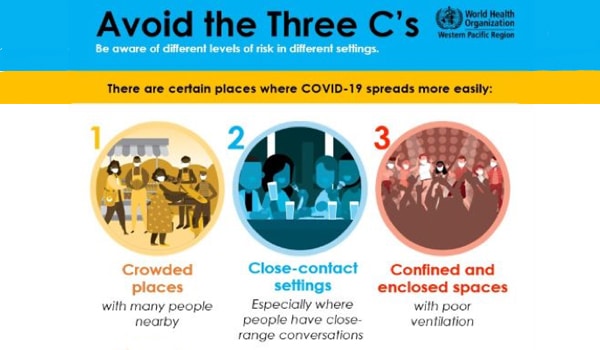
Ars Technica, by Beth Mole, 9 July 2020
“A debate has erupted among researchers over the potential for the pandemic coronavirus, SARS-CoV-2, to spread through the air and – if it does so often enough – what to do about it.
“Though talk of airborne transmission has been simmering since the beginning of the pandemic, it reached a boiling point this week following a letter penned by two researchers and addressed to “national and international bodies.” The letter, eventually signed by 239 researchers, urged those bodies to acknowledge the potential for airborne spread and to recommend control measures aimed at preventing it.
“Most public health organizations, including the World Health Organization, do not recognize airborne transmission except for aerosol-generating procedures performed in healthcare settings,” the letter stated. The evidence on airborne transmission is “admittedly incomplete,” the letter went on, but…
[The rest of this report summarises what is and is not yet known, presents the debate in depth from both sides and concludes that we cannot always “err on the side of safety” because “most precautions aren’t free to implement” and “no measures come without potential downsides”. “So the question is not just whether aerosol transmission “happens” – but how often it happens. And that’s something we still don’t know.” PS. Of the comments, only a few are worth it. Here they are:
– Canadian Gov initiated comprehensive and quick lockdown and social distancing measures on a country-wide level….the results speak for themselves.
– The virus definitely spreads through the air, and masks and social distancing are effective at preventing spread (as well as washing hands). The question about whether the virus is “airborne” isn’t about whether it can spread through the air, it can, it’s about whether itpersistsin the air via very small aerosolized droplets that can infect others. Which, in turn, brings up the question whether the current prevention recommendations are enough. It’s not about whether people need to wear masks, they definitely do, it’s about whether “any mask you can manage, even cloth ones” is enough.
AND https://pubmed.ncbi.nlm.nih.gov/32514291/
– My takeaway from this is that aerosol transmission:
a. probably can occur in some cases
b. probably isn’t the major mode of transmission
c. isn’t practically or economically feasible to prevent in society in general
…therefore, from a public health perspective, the focus has been on airborne droplet and surface transmission, which we can address with basic masks, hand washing and cleaning. All of that sounds like a reasonable balancing of risk/reward to me.



